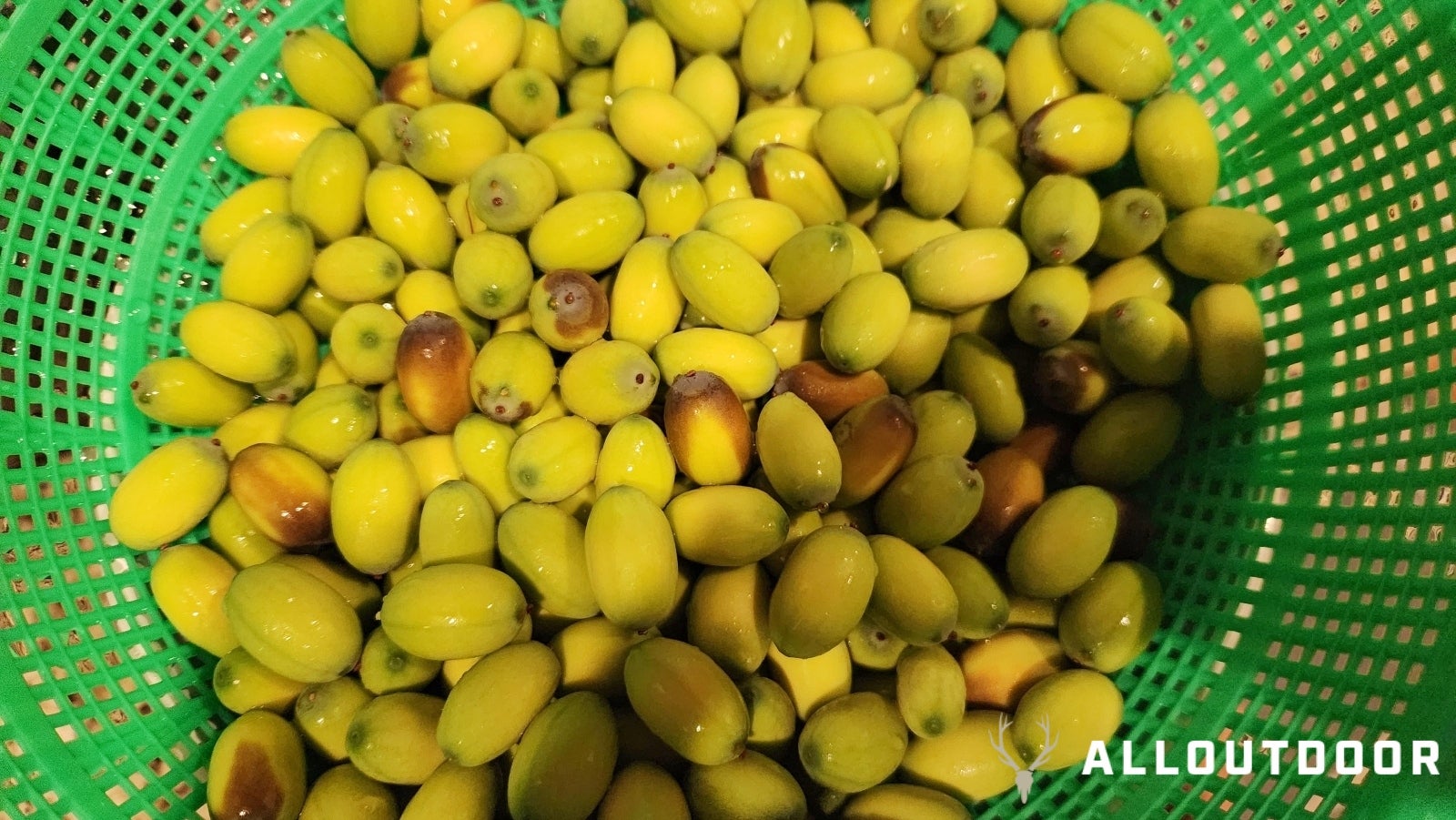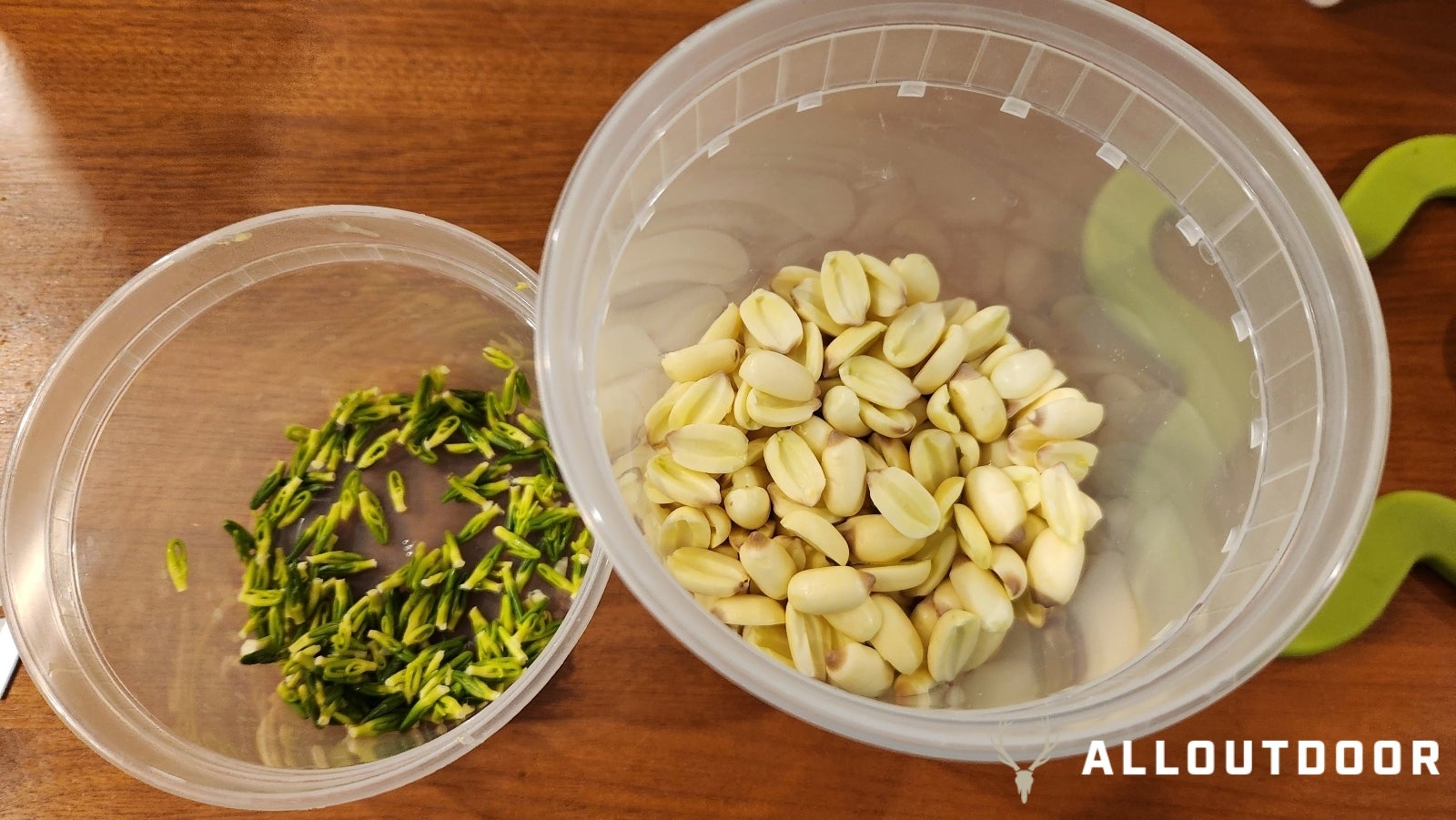
The American Lotus (Nelumbo lutea) is a native plant that is found throughout the US in shallow ponds, lakes, and swamps. The plant was a valuable food source for Native Americans with the large rhizomes roots, shoots, flowers, and younger seeds all being edible. Wherever they grow the American Lotus is quite a prolific species capable of producing more than 8,000 flowers per acre. This is great for us because while the roots can give you the most food value, we’re only after the seed pods that form from the flowers today. At a small local lake there is a big patch of American Lotus that I watched flowering all summer and have waited for those pretty flowers to change into the seed pods. When fully mature the pods dry out, turn brown, and eject the seeds, hence the Cajun name of Graine A Voler – the seeds that fly. But we don’t want fully mature seed pods, instead, you want young green seed pods with nice green seeds in them.




Because I was on foot and unable to access these by the water I just grabbed a pair of old boots and waded into the soft mud the American lotus grew in with a stick to hook the seed pods. Then when I could reach them just twist them to snap the stems right under the base of the seed pod, super easy to do. Make sure to try and avoid any pods with really dark colored seeds, these will be hard and a bit more astringent in flavor.




After collecting a few gallons worth of American lotus seed pods, I took them home gave them a rinse outside with the hose, and brought them in to get the seeds out of the pods. You can use just your hands and tear the seed pods apart to get the seeds out or take a knife and just knick the surface. I found using a small razor made it very easy to get the seeds out with minimal effort. Also a warning the sap from the American Lotus will stain plastics, permanently so don’t use the kitchen bowls your wife likes to store your lotus pods.




Also when you are pulling the lotus seeds, inspect them to make sure there are no wormholes in them, and only keep the solid-feeling seeds. Just toss any seeds that are soft and feel like there’s air in them. After pulling out all the lotus seeds from the pods, throw them in a colander and give them a rinse.


With your now clean American lotus seeds, you can do a couple of things. First, you could just start up a cajun boil like you would for crabs, crawfish, or shrimp and just boil the lotus seeds for about 20 minutes. This softens the shells of the seeds and you just eat them like boiled peanuts. Or you can deshell the lotus seeds raw to prepare them for other methods of consumption. Though peeling them raw does take more time and is a bit tedious to do, so the choice is yours.


Harvesting & Preparing American Lotus – Graine A Voler


If you do choose to peel them raw, here’s the best way I’ve found to do it. Again using a little razor take the tip off the shell of the seed. Make sure to only take maybe a millimeter off the end, that way you are only getting through the shell and not cutting into the flesh of the seed. Then after cutting the end off, I would use this to easily tear the shell off the seed. I recommend doing this in batches, to be more efficient. Under the shell of the lotus seed there is another skin-like layer you want to peel.


This thin layer can be peeled off by just rubbing it with your fingers with a bit of force. After you get that final skin off you can just eat them as is. They are slightly sweet and a little bit bitter because of the stem in the center, my wife just snacks on them this way. If you want to store the lotus seeds long term you have to take another step though.




You need to split the American Lotus seeds in half and take out the green stem in the center. This is pretty easy to do but tedious, just split each seed along its seam and remove the stems. You can save the sprouts and dry them for a herbal tea. It is an astringent tea, but supposedly very good for you. With your cleaned and split American lotus seeds you want to put them in a food dehydrator and let them dry at lower temp till completely dry. They will shrink a good bit, but once dry can be stored away for months in the pantry or years in the freezer. You can use these lotus seeds as a bean substitute in your cooking. I’ve heard of many people using them in stews or cooking them in rice, as well as using them in desserts.
